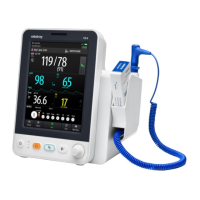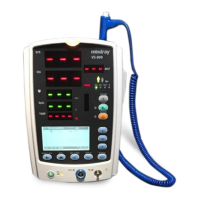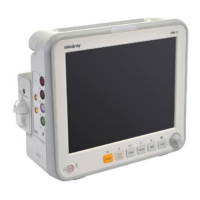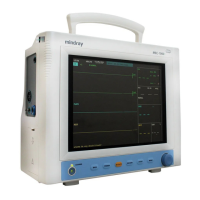6-2
6.2 Alarm Levels
By severity, the equipment’s alarms can be classified into three categories: high level,
medium level and low level.
Physiological Alarms Technical Alarms
High level Indicate that your patient is
in a life threatening situation
and an emergency
treatment is demanded.
Indicate a severe device malfunction or an
improper operation, which could make it
possible that the monitor cannot detect
critical patient status and thus threaten the
patient’s life.
Medium
level
Indicate that your patient’s
vital signs appear abnormal
and an immediate treatment
is required.
Indicate a device malfunction or an
improper operation, which may not
threaten the patient’s life but may
compromise the monitoring of vital
physiological parameters.
Low level Indicate that you patient’s
vital signs appear abnormal
and an immediate treatment
may be required.
Indicate a device malfunction or an
improper operation, which may
compromise a certain monitoring function
but will not threaten the patient’s life.
6.3 Alarm Indicators
When an alarm occurs, the equipment will indicate it to the user through visual or audible
alarm indications.
Alarm lamp
Audible alarm tones
Alarm message
Flashing numeric
6.3.1 Alarm Lamp
If a technical alarm or physiological alarm occurs, the alarm lamp will flash. The color and
flashing frequency match the alarm level as follows:
High level alarms: the lamp quickly flashes red.
Medium level alarms: the lamp slowly flashes yellow.
Low level alarms the lamp lights yellow without flashing.
NOTE
When multiple alarms of different levels occur simultaneously, the monitor will
select the alarm of the highest level and give visual alarm indications
accordingly.
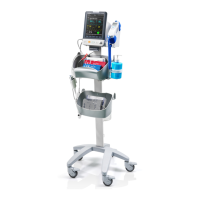
